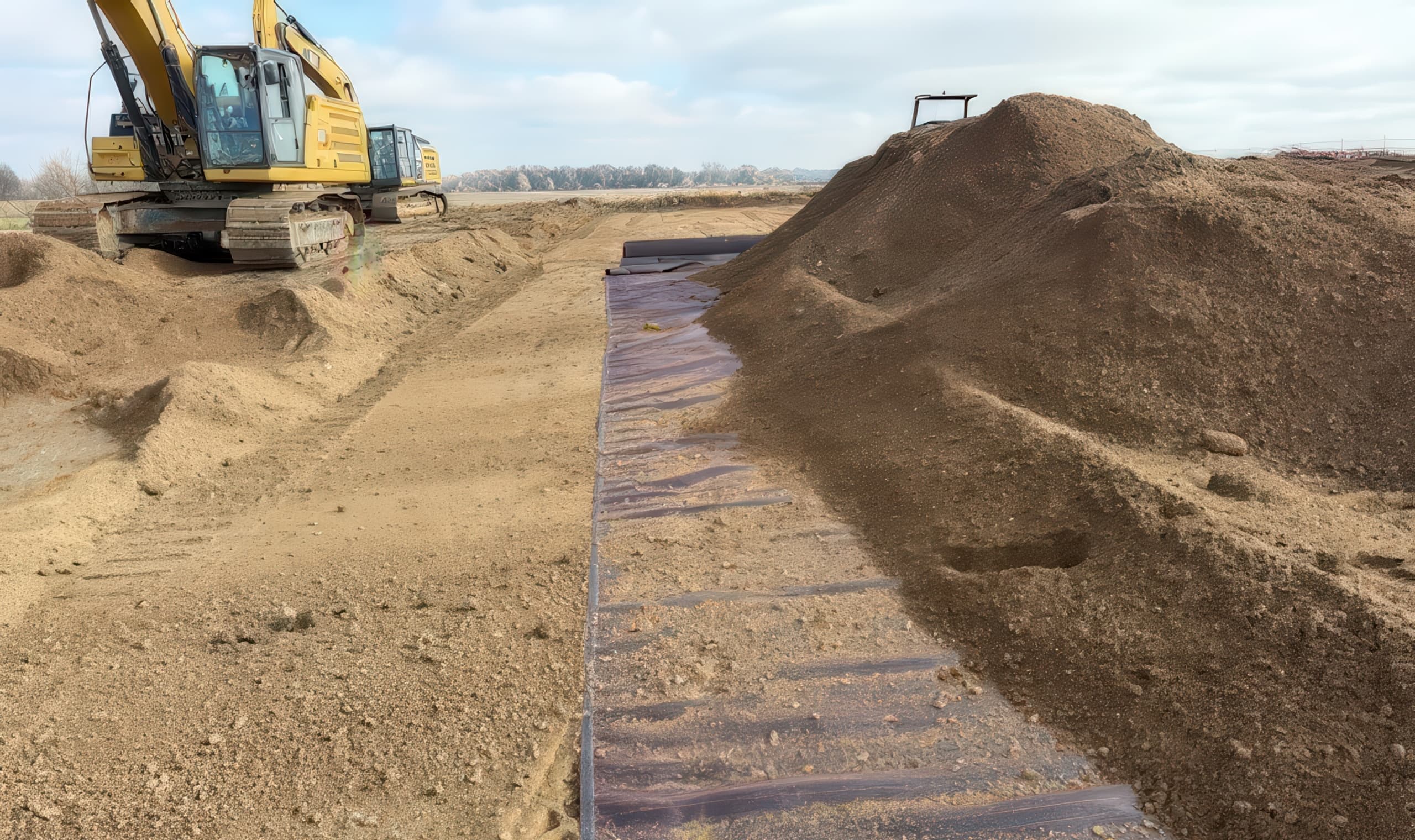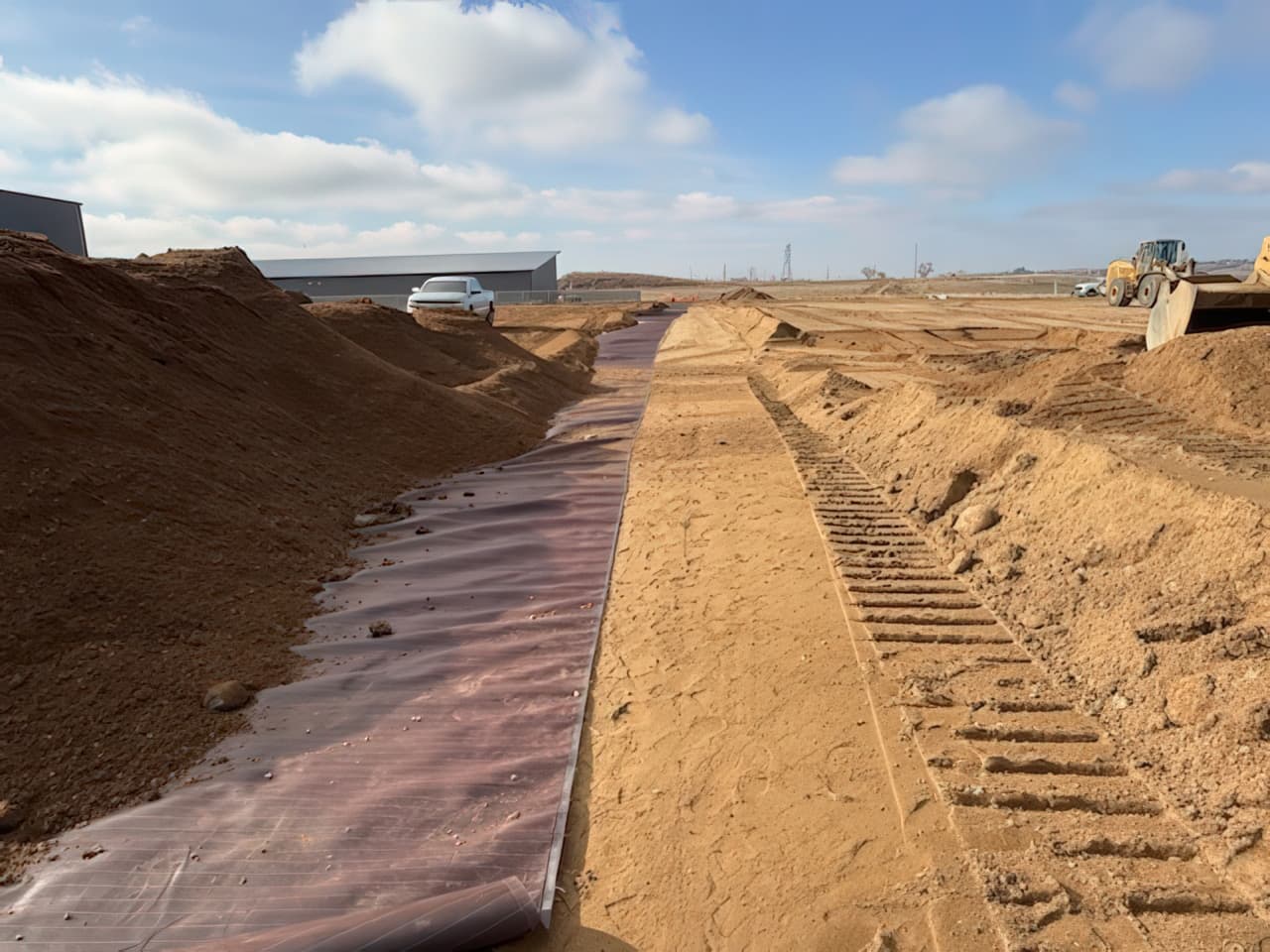Overview
ThermoBond, a leading manufacturer of precast concrete structures, initiated construction on a new facility in Brandon, South Dakota. A key element of the site was an adjacent unpaved laydown yard designed to store completed precast concrete buildings. Given their substantial size and weight, these structures required specialized lifting equipment, similar to container handlers, capable of exerting wheel loads exceeding 46,000 lbs. (20,865 kg). For comparison, a standard semi-trailer wheel load is approximately 9,000 lbs. (4,082 kg).
Challenge
Conventional unpaved roadway design methods, such as the Giroud-Han method, were insufficient for such extreme loading conditions. The primary challenge was to develop a cost-effective, durable, and practical solution that could support these heavy loads without requiring excessive excavation or material use.
Solution
GeoTek Engineering collaborated with Solmax to develop a reinforced section using MIRAFI® RS580i, a high-performance woven geosynthetic designed to enhance load-bearing capacity. By leveraging the RJ Thompson method, a design approach tailored for heavy haul roads, Solmax was able to quantify the reinforcement benefits of MIRAFI RS580i and optimize the aggregate section to achieve maximum efficiency.
Without reinforcement, the design would have required over 60 in (152 cm) of aggregate to support the anticipated loads. However, by incorporating MIRAFI RS580i, the total aggregate thickness was reduced to 37 in (94 cm), consisting of 18 in (46 cm) of sand subbase and 19 in (48 cm) of aggregate placed atop the geosynthetic. This resulted in more than a 35 percent reduction in excavation and base material, significantly cutting costs while maintaining structural integrity.
This project underscores the transformative role of geosynthetic reinforcement in heavy-duty applications where conventional design methods fall short. By integrating advanced materials like MIRAFI RS580i with innovative engineering methodologies, teams can develop infrastructure solutions that are not only high-performance and cost-effective but also sustainable and resilient in the face of extreme loading conditions.
Beyond immediate structural benefits, geosynthetic reinforcement contributes to long-term durability, reduced maintenance requirements, and enhanced material efficiency, making it a game-changer for industries seeking reliable, future-proof solutions. As infrastructure demands continue to evolve, the combination of advanced materials and forward-thinking design will remain essential in meeting performance expectations while optimizing resource utilization.



